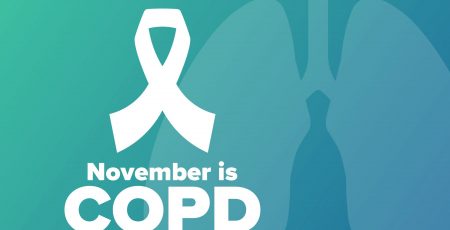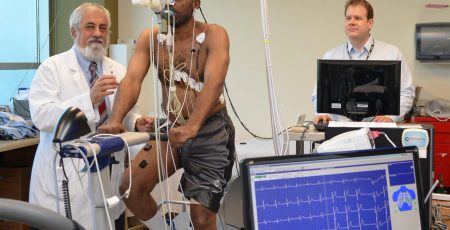28 Feb PERF Monthly Newsletter – February 2018
FEBRUARY 2018
Here is a roundup of the articles, news & updates that we've published on the PERF blog site during the past month. Click on the "Read More" link at the bottom of each excerpt to read the full article.
[column-group][column]
The COPD Obesity Conundrum: Is It Good to Have a High BMI When You Have COPD?
In a database analysis of 22 studies of COPD patients that compared their body mass index (BMI, a measure of whether body weight is high or low) with mortality rates, some surprising findings were made. As might be expected, patients with a normal BMI had lower mortality compared to underweight COPD patients. But here’s the surprise; overweight or even obese patients also had lower mortality than underweight patients.
[/column][column]
How to Calculate Your Own BMI
In last week’s post, we reported on the relationship of BMI, or body mass index, to mortality rates in COPD patients. Here’s how to figure out your own BMI:
- Weigh Yourself
Step on a scale and determine your weight.
- Convert Your Height to Inches Instead of “Feet and Inches”
Convert your height from “feet and inches” into just “inches.” For example, if you’re 5 feet 10 inches tall, your height in inches is (5 feet X 12 inches/foot) + 10 inches = 70 inches.
[/column][/column-group]
[column-group][column]
Japanese Study Encourages Early COPD Detection by Primary Care Physicians
Over 11 million people in the US have been diagnosed with COPD. An additional 12 million are thought to have undiagnosed COPD. Early diagnosis and treatment are beneficial for both management of the disease and possibly for long-term survival, so it stands to reason that early detection of COPD should be a goal among medical care providers.
A group of researchers in Japan set out to test an early detection program for COPD among primary care doctors. A total of 482 patients age 40 or over who regularly visited a general care doctor because of chronic disease were asked to complete a COPD screening questionnaire and undergo a simple spirometry test using a handheld spirometer. The questionnaire gathered information on factors known to be associated with COPD such as age, BMI value, smoking history, and the presence of other medical conditions that are often present in patients with COPD.
[/column][column]
Just What Is A COPD Exacerbation?
Recently, a novel pilot study was conducted using what is called a “system network analysis” to determine whether the variables measured during COPD exacerbations, could help generate a new way of defining COPD exacerbations. A total of 69 variables were studied, including clinical, laboratory, microbiology, cytokines, and imaging. These were analyzed during 72 hours of hospitalizations and 3 months following discharge from the hospital.
The results of the study helped to describe the relationship between COPD and comorbidities (or the simultaneous presence of other chronic diseases or conditions besides COPD in a patient), and the potential role of a B-cell immune response.
[/column][/column-group]
[column-group][column]
Please Donate to PERF and Help Keep Our Programs and Research Going
[/column][column]
Find Out How You Can Donate to PERF at No Cost to You – Simply By Shopping








Brenda DABBS
Posted at 22:21h, 09 MarchI have COPD SENCE 2000 LIVING OYGEN 24HRS I WOULD LIKE2GET THENEWS LETTER READ ALL I CAN TRY 2 STAY AHEALTHY AS I CAN TY
PERF
Posted at 08:22h, 14 MarchDear Brenda,
We are so glad to hear that you do all you can to say as healthy as you can as you cope with COPD. As you requested, we’ve added you to our email so you’ll be sure to receive our weekly email updates with links to the latest articles we’ve posted. Best of luck to you.